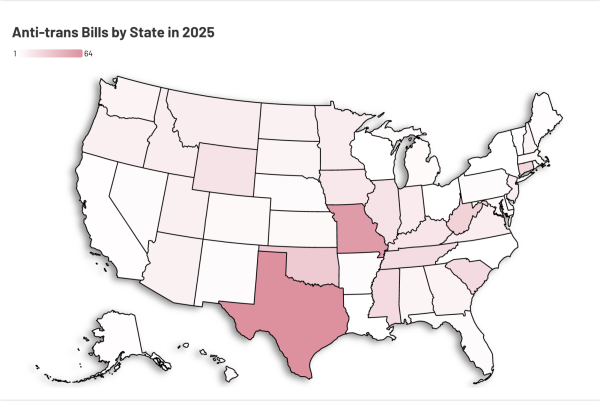Progressives never had a mandate
I still remember election night 2020, watching the election results from home on my laptop. A lot of the media seemed to be expecting a Biden victory repudiating Trump by a healthy margin. Polling averages had Biden easily winning Wisconsin, doing fairly well in Michigan, and with a slight lead in Florida, with Trump narrowly leading in states like Texas, Ohio, and Iowa. However, as the night unfolded, that clearly wasn’t the case. I distinctly remember the Democratic anxiety at the thought of Trump being reelected president, watching Florida, Ohio, and Iowa go red while leading in the counts of all swing states and closing in on Arizona.
My question now is: Where did all of that anxiety and worry go?
The instant that Pennsylvania was declared for Biden and he was declared president-elect, and especially after the narrow Senate wins in Georgia, a lot of that concern seems to have been swept under the rug. Many of the pundits worried that night now cite it as a mandate to eliminate the filibuster, pass partisan bills with trillion-dollar price tags, and reimagine the American economy as we know it.
Sure, Biden won, but the margins clearly fell short of expectations, especially for the situation he was in, and it raises some important questions for Democrats in future elections.
Of 206 “pivot counties” that voted for Obama twice and then for Trump in 2016, only 25 of them voted for Biden. The 88 percent of pivot counties that voted to reelect the former president gave him a median margin of victory of 13.08 points, while the other 12 percent only gave Biden a median margin of victory of 3.27 points.
Many of these counties are packed in the Midwest, especially around Wisconsin and Iowa, where they account for 17.35 percent and 26.11 percent of their state populations, respectively (with similar contribution percentage to statewide turnout). Ohio and Michigan have fewer pivot counties but they still account for 13.95 percent and 18.36 percent of their state populations (also with a similar contribution percentage to statewide turnout).
The county to make the strongest shift rightward since 2008 is Elliott County, Kentucky, voting for Obama by a 25 point margin and eventually voting for Trump by a 51 point margin, a total shift of 76 points.
Trump won Iowa by a margin of 8.2 percent in 2020, a state that voted for Obama twice with margins of 9.54 percent and 5.81 percent, while Sen. Joni Ernst (R-IA) won reelection by a similar margin. Trump retained all of 31 pivot counties in the state. All of Iowa’s pivot counties have shifted at least 17 points to the Republicans since 2008, with a median shift of 33.36 percent. From 2016, they’ve made a slight median shift of 3.4 points to the right.
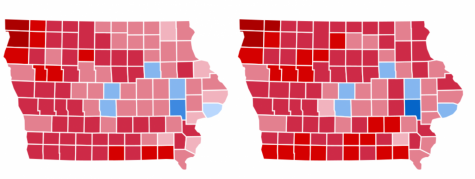
Trump won Iowa by a margin of 8.2 percent in 2020, a state that voted for Obama twice with margins of 9.54 percent and 5.81 percent, while Sen. Joni Ernst (R-IA) won reelection by a similar margin. Trump retained all of 31 pivot counties in the state. All of Iowa’s pivot counties have shifted at least 17 points to the Republicans since 2008, with a median shift of 33.36 percent. They made a slight median shift of 3.4 points to the right from 2016.
A similar case can be found in Ohio, which voted for Trump by 8 points last year, the first time the state has voted for the losing candidate since 1960. All but one of its 9 pivot counties voted for Trump. Since 2008, every one of Ohio’s pivot counties has shifted to the right, with a median shift of 25.41 percent. From 2016, they’ve also made a slight median shift of 2.57 points to the right.
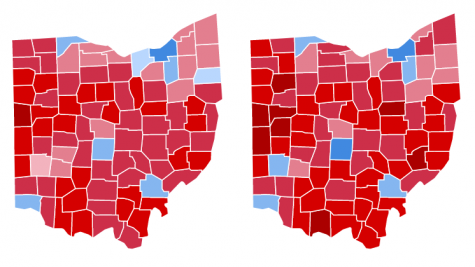
Looking at the counties and state margins, Iowa and Ohio are likely to remain in the Republican column (although that doesn’t mean that it would be impossible for a Democrat to win in those states).
Although Trump lost in Michigan and Wisconsin, he managed to retain 11/12 and 21/23 pivot counties in each state respectively, limiting Biden’s winning margin in Michigan to just under 3 points and coming very close to winning Wisconsin (Biden only won the state by 0.62 percent).
These pivot counties are not densely populated but are still very important for a good performance in the mid-western states, but “working class Joe” failed to get them back. The margins appear even weaker considering that Biden outspent Trump’s ad spending in these states (and several others) by tens of millions of dollars.
He outspent Trump by 47.3 million in Pennsylvania, and went on to win it by only 1 percent, outspent Trump by 77.1 million in Michigan, and went on to win by a little under 3 percent, outspent Trump in Wisconsin and Arizona by about 20 million each, and went on to win both states by under 1 percent. The most embarrassing state performance for Biden was in Florida, where he outspent Trump by 50.7 million, only to lose it by 3 points.
The only state that Trump outspent Biden in and lost was in Georgia, where he outspent Biden by about 20 million, and went on to lose by less than 1 percent.
Biden’s victory is mainly attributable to improving Democratic margins in cities and suburbs. It’s how in Maine and New Hampshire, where pivot counties make up 47.08 percent and 36.2 percent of the state populations, Biden was able to improve on Hillary Clinton’s performances in 2016 (Trump lost New Hampshire by 0.4 percent and came close enough to winning Maine that Gary Johnson, the Libertarian Party nominee, had a share of the vote larger than the margin of loss). Biden only won ⅛ of the pivot counties in Maine, but that one county made up 8.83 percent of the vote in the state, and he won back ⅔ of the pivot counties in New Hampshire, which made up almost 32 percent of the vote.
Georgia provides a good example as to how Biden won the election; despite only one Georgia county flipping in 2020 – Burke County, a majority-minority county that went to Trump by about 2 points – the increased turnout in the already Democratic suburban and urban counties gave Biden the votes needed to win the state.
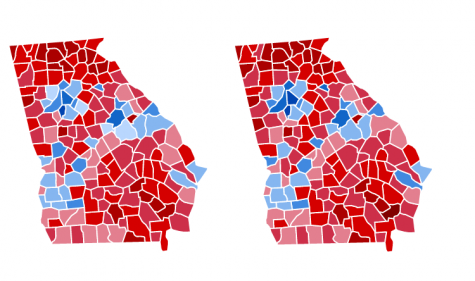
But the fact that Biden was not able to win a single swing-state by 3 percent makes it clear that the 2020 presidential election was by no means a repudiation of Trump or his politics, especially considering the politically/economically unfavorable situation he was in.
A strong performance in pivot counties helped Trump hold a lot of ground in the midwest, and he had an unexpectedly strong performance with Hispanics in Texas and Florida. In Florida, Miami-Dade County swung 22 points right and two freshmen House Democrats representing the region lost re-election to Mayor Carlos Gimenez and journalist Maria Elvira Salazar. In Texas, border counties made heavy shifts to the right, as high as 55 points.
Zapata County, an overwhelmingly Hispanic (94.7 percent) border county that has historically reliably voted Democratic (the last time it voted for a Republican was 1920), voted for Trump with 52.5 percent of the vote.
Texas’ 15th congressional district, where Democrats normally win with double digit margins, was within 3 points. Democrats in Texas’ 28th and 34th district were also put into vulnerable positions but managed to overperform Biden’s 4 percent margin. Trump is an appealing figure to blue-collar voters, which most Hispanics are. As someone who is Hispanic, most Hispanics I know tend to be moderate or left leaning on fiscal issues but are very socially conservative (which is partly why most of us don’t take the term “Latinx” seriously). Campaigning against socialism and ideas like “defund the police” also benefited the GOP. This also seems to indicate that Trump’s immigration and border policy are more offensive to white suburbanites than to the Tejanos actually living on the border.
In the House overall, Democrats were expected to have an expanded majority. But they ended up losing 13 seats (twelve of them being seats flipped in 2018) and almost losing their majority. Democrats flipped 3 seats, but 2 of them were after court-mandated redistricting in North Carolina that drew safe Democratic seats. Not a single incumbent Republican lost reelection in the House.
The only non-freshman Democrat to lose in the House races was Collin Peterson, first elected in 1990 as a moderate Democrat in a rural solid Republican district (with a CPVI rating of R+17) that voted for Trump by about a 30 point margin in 2016 and 2020. He was one of two Democrats, along with Rep. Jeff Van Drew, to vote against Trump’s first impeachment. Van Drew, who flipped a conservative South Jersey seat in 2018, went on to switch parties over Trump’s impeachment (even meeting Trump about it), and was re-elected by a 5.7 percent margin in November.
Even though Democrats did win the Senate, election results were still lackluster. Democrats were expected to win easily in Maine and Colorado, do well in Arizona and North Carolina, and be competitive in Iowa, South Carolina, and even Montana. Out of all of those seats, only Colorado and Arizona flipped, and races in states like South Carolina (NOTE: Like the race in Kentucky, I never expected that race to go to the Democrats, but I never understood the expectation that a state like South Carolina would be close or why people were donating so much money to a losing candidate) were called in a matter of minutes after the polls closed (despite fundraising records being broken in the race). When the two Georgia runoffs took place, Democrats were at a net-gain of just one Senate seat (they lost a seat in Alabama), and although they did win those two seats, the results are more attributable to Republican infighting over the 2020 election results and demotivated voters sitting out of the race than anything else.
Democrats weren’t even able to perform well in the state legislature elections they had put so much emphasis on. They didn’t win a single legislative chamber and ended up giving the Republicans a governing trifecta in New Hampshire (which will likely result in a congressional map that ends Rep. Chris Pappas’ career in the House). While Republicans will have control over redistricting in 188 districts across the country, Democrats will have control over just 73.
With a massive fundraising lead over Trump and favorable political conditions, Biden put together a very flimsy voting bloc that barely got him elected, almost wasn’t enough for the House, and that has given him the slimmest congressional majority in modern history. This is supposed to be the best Democrats can do, by the way.
Rep. Abigail Spanberger, a Democrat who flipped Virginia’s 7th congressional district in 2018 and narrowly won reelection, told her Democratic colleagues in a leaked call that, “If we are classifying Tuesday as a success from a congressional standpoint, we will get f****** torn apart in 2022.”
Looking at the 2021 elections, it becomes even clearer that relying on high urban turnout and good suburban margins is an unreliable strategy, as Biden’s popularity erodes and with Trump (mostly) out of the picture. Republicans won a gubernatorial election last month in Virginia, a state where Trump lost by 10 points, by performing even better in rural counties than they did in 2020. The race had a 55 percent turnout rate, the highest for a Virginia gubernatorial election since 1997. Glenn Youngkin, the Republican nominee, won by ramping up margins in rural areas (winning 45 counties with over 70 percent of the vote, 15 of them with over 80 percent) but also closing margins in suburban and urban areas that Biden had strong performances well in. Exit polling shows Youngkin won over voters in the suburbs by a 7 point margin (Biden won over voters in the Virginia suburbs by 8 points last year).

Youngkin also won in 6 of 11 congressional districts, 2 of which are currently held by Democrats: Abigail Spanberger and Elaine Luria (who also flipped a seat in 2018). It wasn’t just the governor’s seat that flipped, but the Lieutenant Governor, Attorney General, and House of Delegates (which Democrats flipped in 2019) went to the Republicans as well.
In my home state of New Jersey, which Biden won by about 16 points last year, incumbent governor Phil Murphy was expected to easily win reelection. Murphy ended up winning by just 3 points.
Republicans gained a seat in the NJ Senate and gained another 6 in the NJ General Assembly. Most notably, State Senate President Stephen Sweeney, a powerful political figure in the state representing a corner of South Jersey (and who has held office since 2002), lost reelection to truck driver Ed Durr in a major upset. Durr spent only $2300 on his campaign.
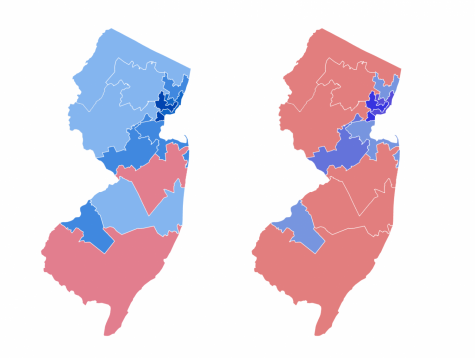
In 2018, Democrats managed to win 11/12 seats in New Jersey’s House delegation, despite 6 of those seats leaning to the GOP, by winning over voters in traditionally Republican suburbs. Last month, Ciattarelli won all 6 of those seats back, with his lowest margin being 6.2 percent, and a median margin of 10.5 percent (6.95 percent if you don’t count the two Republican seats). In New Jersey’s 7th congressional district, where Biden won by 10 points, Ciattarelli won by about 6 (a shift of 16 points to the right in just one year). Another surprising outcome in the districts was in the 6th district, where Murphy won as expected but with a margin of victory of 4 points, far from Biden’s margin of 16.
Joe Biden was never elected to be an FDR or LBJ style president, who were given supermajorities in the Senate and House after winning the presidency in landslides. Of course Republicans aren’t going to let him pass trillions of dollars in unnecessary spending, especially with historically high levels of inflation which was originally considered “transitory” (and I don’t believe Biden when he says that pumping more money into the economy will somehow reduce inflation).
Biden won over suburban voters by framing himself as the return to normalcy during a chaotic time, but nominating people like Xavier Becerra, Deb Haaland, and Vanita Gupta to high level positions in government aren’t the best way to display “unity and bipartisanship” (and his judicial nominees don’t seem very moderate either). His first major bill, The American Rescue Plan, was rammed through Congress on a party-line vote using budget reconciliation.
The only bipartisan thing Biden has done so far is the Infrastructure Investment and Jobs Act, which was almost voted down in the House because of progressive Democrats who said it didn’t go far enough.
The problem with advocating for Biden to moving leftward is that it either fails to recognize that the 2020 Democratic voting bloc is really flimsy and that Democrats have to turn things down a couple notches OR it does not care and would like to get legislation passed regardless of what it means for Democrats’ prospects in future elections.
Progressives were probably the biggest losers this year; they lost a City Attorney race in Seattle by 11 points, Eric Adams won the Democratic nomination for the NYC Mayoral race, Nina Turner lost the Democratic primary in Ohio’s 11th district, and despite Buffalo mayor Bryon Brown losing in the Democratic primary to socialist candidate India Walton (who was endorsed by 4 Democratic senators, AOC, and Jamaal Bowman), he managed to win reelection by 19 points after mounting a write-in campaign against her.

Biden should be completely ignoring (maybe even firing) advisors advocating for “big” things from his administration and ditch the vision of fixing America by throwing money at it. Instead, what he should be doing is trying to restore trust in the government by appealing to both sides of the political aisle and rejecting the progressives who are pushing the party leftward. If he wants to improve Democratic prospects for 2022 and 2024, he should be working to actually expand his base.
A key part of this would involve improving Democratic branding and being able to fight off the labels of radical policies like “socialism” and “defund the police”, which means primarying and kicking out progressives from the frontlines of the politics. Issues like critical race theory, the border, crime, and the economy are losing issues for Democrats, and they should acknowledge that. This has no clear downsides, since progressives are too frightened by the GOP to vote for them and the districts where these politicians are in are already overwhelmingly Democratic.
The DNC should be promoting and centering around politicians like Jared Golden, who represents Maine’s rural 2nd congressional district. His district is the second-whitest district in the country at 94%, second to KY-5, which features the pivot county of Elliot, so this should make him an especially useful resource for Democrats. This would help improve their standing with voters in rural areas. A major part of Democrats losing ground in rural counties across the country is the image of elitism that comes with them. I’ve seen a lot of Democrats refer to these rural voters as “voting against their own interest”, “racists” (despite many of them having voted for Obama twice), “sexists”, people who are “scared of progress”, and look down upon them for not being college educated. As rural parts of the country face economic struggles, Trump’s economic populism appeals to them, and even though a lot of these rural steelworkers and farmers know the negative short-term effects that things like trade-wars and tariffs can have on the economy, they approve of it because it shows they have someone who at least tries to fight for them.
The average rural voter wants a level economic playing field rather than a bunch of government handouts, and Biden’s promises increased spending on social programs through increased taxes don’t address that.
By primarying politicians like AOC, who is so politically toxic that moderate Democrats won’t take her help, is unwilling to contribute to the DCC, and willing to tank Democratic bills, the DNC would be in a much better position to retain power and actually be able to use it.
But that requires a shift back to the center, and I’m skeptical that will happen. After the 2022 elections (at this rate), I’m not expecting a Democratic trifecta to come back for a while.











